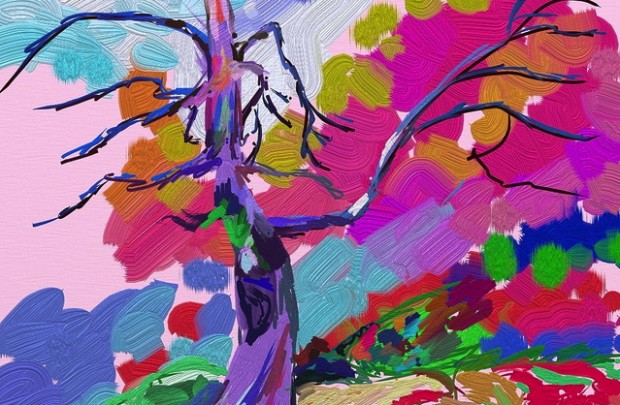While it may be easy to imagine how iPads can support classroom studies with reading, history, or science, some of the most groundbreaking -- and creative -- work with digital tools may be happening in arts classes. Schools using iPads are incorporating them in art and music classes, too -- and not only as tools for measuring and remembering, but for creating as well. Whether or not students grow up to become the next David Hockney - who has created several New Yorker covers using the iPad’s drawing tool - teachers say there is value to learning to create using digital tools, especially when blended with more hands-on means of expression.
Susan Sonnemaker, a middle school chorus and band teacher at San Francisco Day School, uses school-provided tablets in limited amounts throughout the year. She finds them most useful for managing technical aspects of music class with record speed -- like recording practice sessions, using a tuner app to help kids tune their own instruments, and collecting digital practice sheets. For practical matters, Sonnemaker says, the iPad has been invaluable, because streamlining and managing tuning and practice leaves more time for actually playing or singing music.
But what about using tablets for inspiration and creating new music? When it comes to creating something new, Sonnemaker says that technology helps her students be more creative, not less: “In regards to composition, students are not only more engaged in their own projects (with iPads), but they're using real life technology," she said. "We still do a good deal of composition exercises using old-fashioned pencil and paper. But using Garageband on the iPad is what many professional musicians use, so students are also acquiring skills to compose in the real world if they choose to continue.”
Benefield’s colleague, visual art teacher Karen Richards, notes that iPad apps have made the tools that digital artists use much more accessible for young children, but having the digital technology available doesn’t at all diminish hands-on art making. “I must stress that technology is one of many tools our students have to execute their critical and creative thinking. We believe that they must also know how to sew, woodwork, sculpt in clay, paint, draw, make prints, shoot a good photo, animate an image, and know about the artists that they stand on the shoulders of,” Richards said.
Richards describes a recent photography-based project she developed in order for children to blend the two: “They're all taking tons of photos (with the iPads), so we worked on photography. We also learned a bit about Photoshop with Photoshop Express, and we had each student (K-8) edit and alter their photo before printing it out on watercolor paper," she said. The final outcome was a sewing project inspired by textile artist and San Francisco Day School artist-in-residence Ehren Reed, where the students sewed into their photos.


